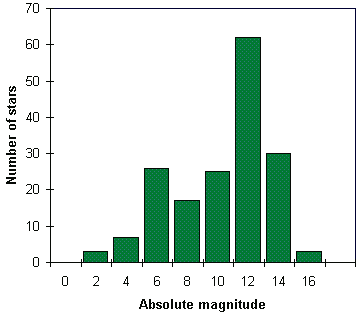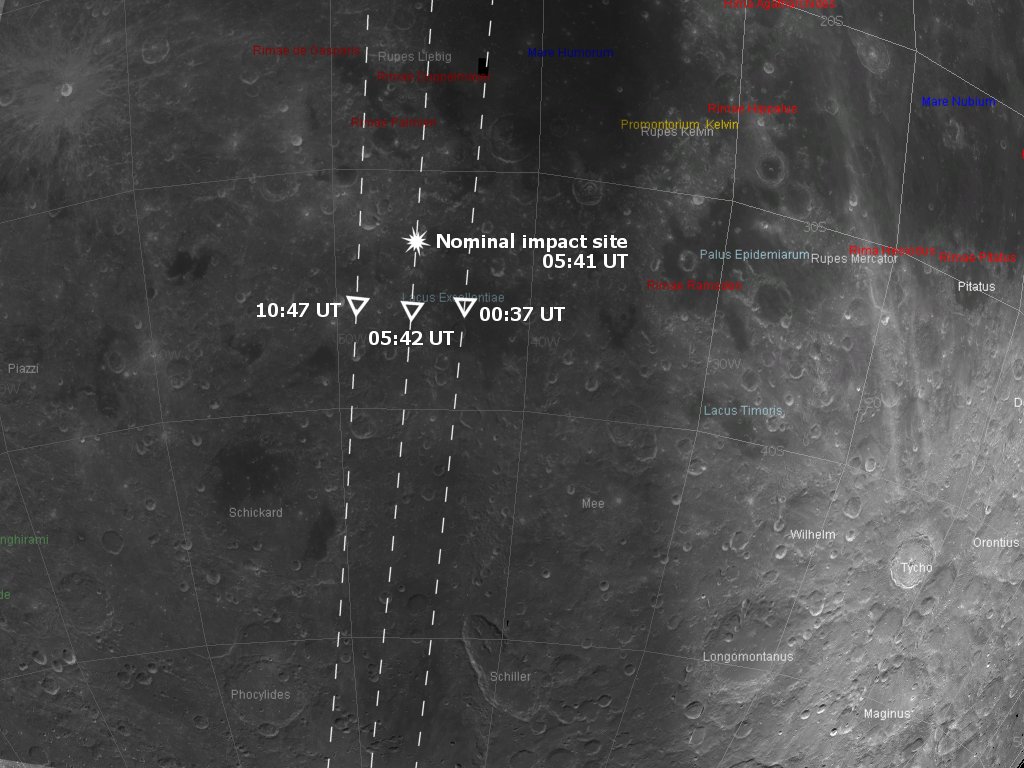
This month, after all the excitement of the IAU General Assembly planet definition, we stay a bit closer to home and have a tour of the Jodrell Bank Control Room. We find out about the Lovell Telescope winning the BBC unsung landmarks vote and plans for our new Visitor Centre. We get the latest astronomy news which includes geysers on Mars, the impact of ESA's SMART-1 on the Moon and the outcome of the IAU's planet definition. As always we find out what we can see in the night sky this month and Nick and Tim discuss the Moon receding from the Earth and they work out how many stars are larger and smaller than the Sun.
![A composite Hertzsprung-Russell diagram containing two datasets - all the stars closer than 10 parsecs (red circles) and all the stars with apparent magnitudes brighter than 3 (blue squares) - data from the Hipparcos catalogue. Here account has been taken of each star's distance so that brightness can be measured in absolute visual magnitudes. [Note this diagram gives a false representation of a typical HR diagram as the top half is artificially over-populated by forcibly including the bright stars - most stars are actually fainter than the Sun.] - taken from the Life In The Universe distance learning course run at Jodrell Bank Observatory.](http://www.jodcast.net/archive/200609/hrdiagram.gif)
A composite Hertzsprung-Russell diagram containing two datasets - all the stars closer than 10 parsecs (red circles) and all the stars with apparent magnitudes brighter than 3 (blue squares) - data from the Hipparcos catalogue. Here account has been taken of each star's distance so that brightness can be measured in absolute visual magnitudes. [Note this diagram gives a false representation of a typical HR diagram as the top half is artificially over-populated by forcibly including the bright stars - most stars are actually fainter than the Sun.] - taken from the Life In The Universe distance learning course run at Jodrell Bank Observatory.

The frequency distribution of the absolute magnitudes of all stars within 10 parsecs of the Sun (from the Hipparcos database). The absolute magnitude of the Sun is about 4.8.
Show Links
- The Jodcast IAU General Assembly special edition
- MP3: Lisa Harvey-Smith gets views of anonymous astronomers before the final discussion at the IAU
- Song: They demoted Pluto
- The BBC unsung landmarks vote results
The news
- MP3: Download this segment individually (low and high bandwidth versions)
- ESA's SMART-1
- Nature article on Martian geysers
- Our IAU General Assembly special with the vote on the definition of a planet
Control Room tour with Mark Roberts
- MP3: Download this segment individually
- The Lovell Control Desk
Interview with Dr Teresa Anderson
- MP3: Download this segment individually
- Jodrell Bank Visitor Centre
Ask an astronomer
- MP3: Download this segment individually
- Eratosthenes' measurements of the distance to the Moon
- Apache Point Observatory Lunar Laser-ranging Operation
- Cool pictures of APOLLO in action
- Jodrell Bank's Life in the Universe distance learning course.
The night sky for September 2006
- MP3: Download this segment individually
- Ian Morison's Night Sky pages for September
- Ian's Uranus spotting chart for 4th September 2006
Show Credits
| News: | Megan Argo |
| Interview: | Megan Argo talked to Mark Roberts (Jodrell Bank Observatory) |
| Interview: | Nick Rattenbury interviewed Dr Teresa Anderson (The University of Manchester) |
| Ask an Astronomer: | Nick Rattenbury asked Tim O'Brien your questions |
| Night sky this month: | Ian Morison |
| Presenter: | Stuart Lowe |
| Editor: | Stuart Lowe |
| Cover Art: | The Jodrell Bank Control Room - Anthony Holloway |
| Website: | Stuart Lowe |
| Intro/Outro Cast: | David Ault was the voice of the Guide |
| Cover art: | The Control Room of the Lovell telescope and MERLIN Credit: Anthony Holloway, Jodrell Bank |

